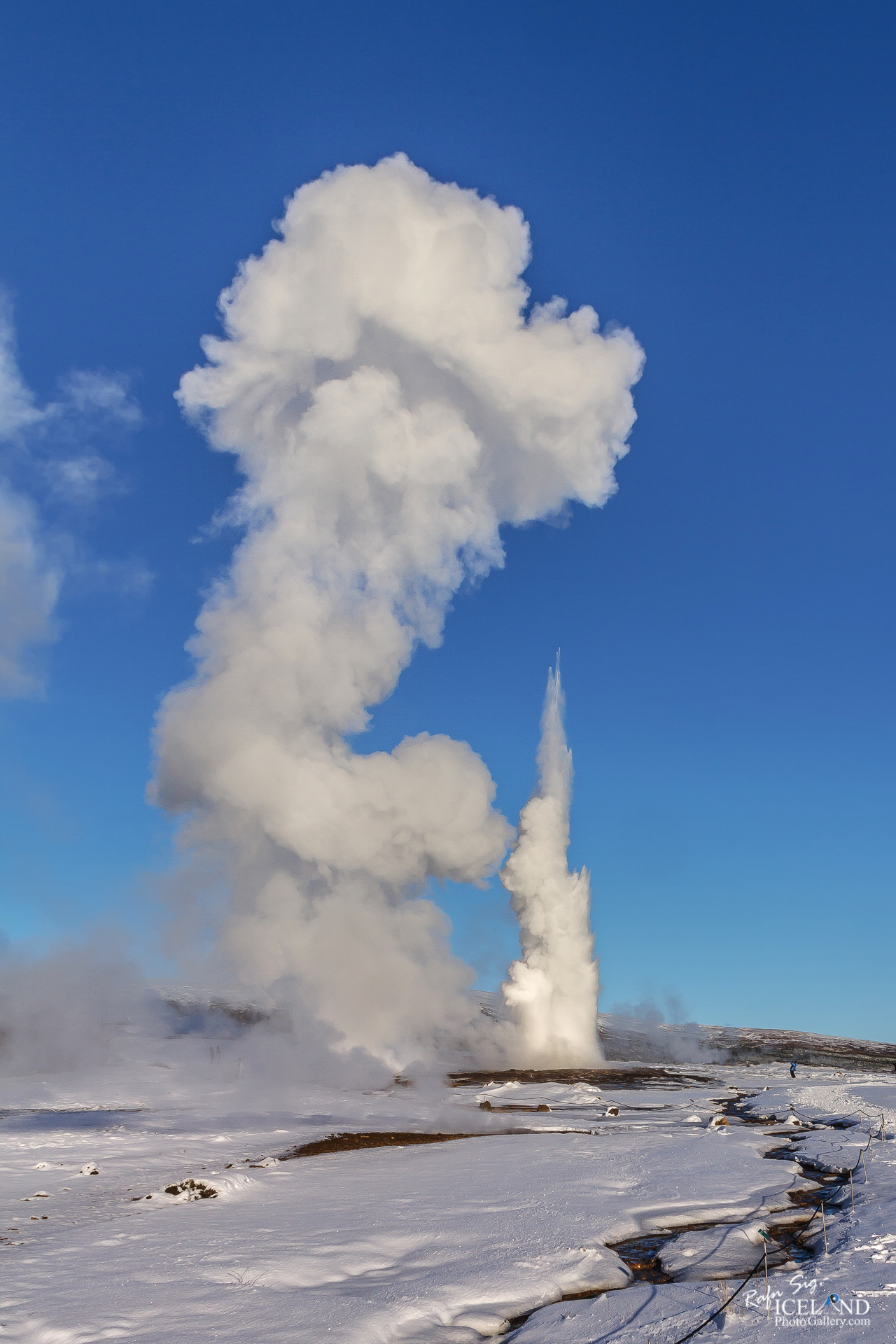2020-04-06
Iceland │ Strokkur Geyser │ Winter Landscape Photography
Documenting Iceland (2020)
by: Rafn Sig,-
Strokkur (Icelandic for “churn”) is a very reliable fountain geyser located in a geothermal area beside the Hvítá River in Iceland in the southwest part of the country, east of Reykjavík. It is one of Iceland’s most famous geysers, erupting once every 6–10 minutes. Its usual height is 15–20 metres (49–66 ft), although it can sometimes erupt up to 40 metres (130 ft) high.
Strokkur was first mentioned in 1789, after an earthquake helped to unblock the conduit of the geyser. Its activity fluctuated throughout the 19th century; in 1815 its height was estimated to have been as much as 60 metres (200 ft). It continued to erupt until the turn of the 20th century, until another earthquake blocked the conduit again. In 1963, upon the advice of the Geysir Committee, locals cleaned out the blocked conduit through the bottom of the basin, and the geyser has been regularly erupting ever since
Active geysers like Strokkur are rare around the world, due to the fact that many conditions must be met for them to form. They are thus only found in certain parts of highly geothermal areas.
The first condition that is necessary is an intense heat source; magma must be close enough to the surface of the earth for the rocks to be hot enough to boil water. Considering that Iceland is located on top of the rift valley between the North American and Eurasian tectonic plates, this condition is met throughout most of the county.
Secondly, you will need a source of flowing underground water. In the case of Strokkur, this comes from the second largest glacier in the country, Langjökull. Meltwater from the glacier sinks into the surrounding porous lava rock, and travels underground in all directions.
Evidence of this flowing water can be found in Þingvellir National Park, where there are many fresh water springs flowing straight from the earth.
Finally, you need a complex plumbing system that allows a geyser to erupt, rather than just steam from the ground like a fumarole. Above the intense heat source, there must be space for the flowing water to gather like a reservoir. From this basin, there must be a vent to the surface. This vent must be lined with silica so that the boiling, rising water cannot escape before the eruption.
Check out: Sjónarhóll Abandoned Farm
. . . I need your support: . . . https://www.patreon.com/RafnSig
You can buy this and other photos at my Icelandic Stock Photo Web: IceStockPhotos.com




Just want to say – Thank you
You are a great photographer.
Oh boy! What a great photo Ill certainly return again.